RISE & FALL OF THE STUYVESANT CLOWN (1895)
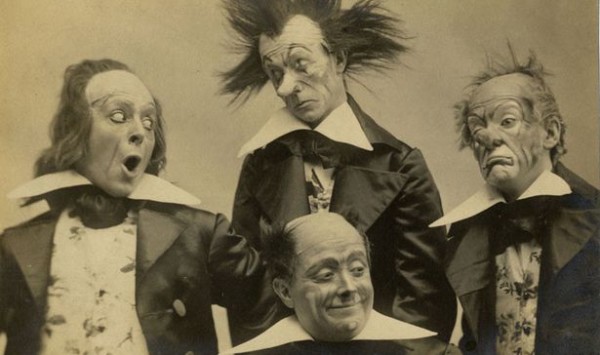
******************************************************************************************************************************* Brownstone Detectives investigates the history of our clients’ homes. The story you are about to read was composed from research conducted in the course of one of those investigations. Do you know the history of YOUR house? ******************************************************************************************************************************* Back in the early 1890s, in Stuyvesant Heights, there were clowns everywhere. Roaming and squeezing their little horns, making sad, droopy faces, and generally miming mischief. And everyone came to see them at Halsey Street and Saratoga where they paid a nickel a person to get in. Life for the clowns existed there for at least 20 years, until one day it all came to a halt. The developers had arrived and were threatening the home of the clown, threatening his very existence. BROOKLYN EXPANDS TO BUSHWICK By the mid-1890s, three blocks in the furthest reaches of the Eastern District’s Stuyvesant Heights had surprisingly remained untouched by speculative progress. While feverish land purchasing and selling had gone on all around this valuable real estate for the previous ten or so years, these dusty plots of land would continue to sit like the vestiges of the past that they were – unused farm land. Eventually, though, this land would be put to use by a bunch of clowns – the lots would begin, in 1891, to be referred to as the “circus grounds,” as traveling circuses and shows would begin annually to rent the land for their high profile extravaganzas. But the reign of the Stuyvesant Clown would be relatively short as, […]
THE NAVY BICYCLE SQUAD OF BROOKLYN (1897)
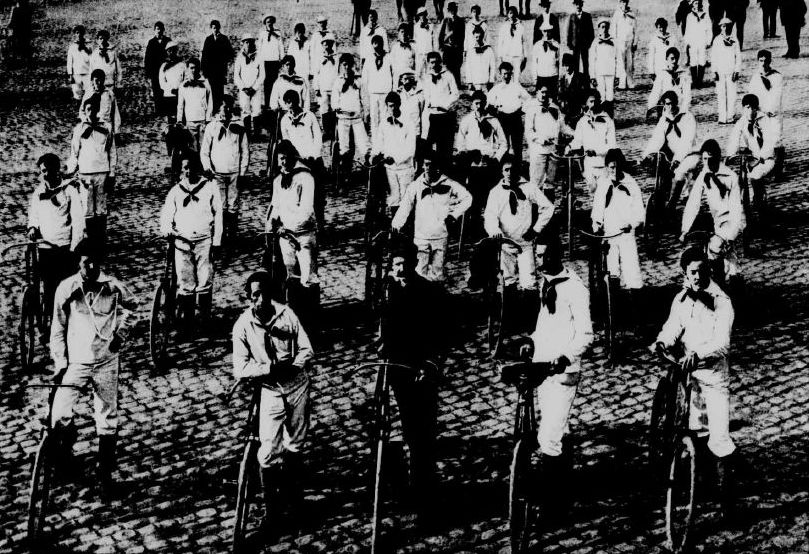
******************************************************************************************************************************** Brownstone Detectives investigates the history of our clients’ homes. The story you are about to read was composed from research conducted in the course of one of those investigations. Do you know the history of YOUR house? ******************************************************************************************************************************** Boy! But the Navy sure knew how to get around back in the day! These “wheelmen” – resplendent in their military uniforms – were organized not just for play, but for work. As bicycling was as much of a past time then as it is today, these men likely rode not only for their enjoyment, but to travel from station to station, as well – also representing the Navy in bicycling races. Headquartered at 56th Street in Brooklyn, the Second Naval Battalion was organized just before this picture was taken in July of 1897. It performed duty for the state during the Spanish-American war on coast signal service, guarding mine fields at Willets Point, in Queens, and on patrol duty in New York harbor aboard various vessels. From the New York Tribune of 4 July 1897, we have pictured above, “the first meet of the Bicycle Squad of the 2nd Naval Battalion at the Memorial Arch (Grand Army Plaza) in Brooklyn.” Follow @BrownstoneDetec Share ———————————————————————————————————————– The Brownstone Detectives Brownstone Detectives is an historic property research agency. Our mission is to document and save the histories of our clients’ homes. From our research, we produce our celebrated House History Books and House History Reports. Contact us today to begin discovering the history […]
SUNSETTING ON A BED-STUY BOULEVARD (1909)
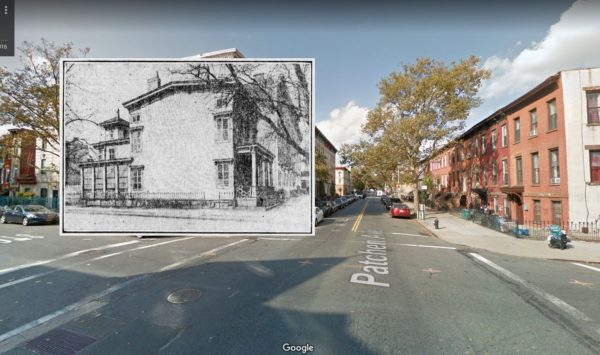
******************************************************************************************************************************** Brownstone Detectives investigates the history of our clients’ homes. The story you are about to read was composed from research conducted in the course of one of those investigations. Do you know the history of YOUR house? ******************************************************************************************************************************** In 1909, a landmark was about to be destroyed. It was quite common, though, at the time for owners to tear down the antiquated wood-frame mansions that dotted Brooklyn’s lamdscape. Since the new brownstone houses had become all the rage in the 1880s, these tinder “firetraps” had become redundant, difficult to sell, and simply unstylish to live in. By the late 19th century, they were being sold, in many cases, for the value of their land as building lots. And with the demise of these historical artifacts, went some truly beautiful examples of mid-19th century architecture, few of which remain with us to this day. THE DE MILLE HOUSE The De Mille house was built around the middle of the 19th century for the family of that name, “and it has been a landmark in that region since the days when it was surrounded by open fields.” Yes, even Bedford-Stuyvesant – today chockablock with brownstone and masonry homes – was once – even before the advent of wood-frame homes – forested land alongside open virgin fields. As a matter of fact, the corner of Quincy and Patchen, in the 1850s, was little more than hills, dales, dirt lanes, and the vague promise of a future suburban city. “Broadway, which is nearby, […]
CSI: MURDER ON THE PARK SLOPE? (1893)
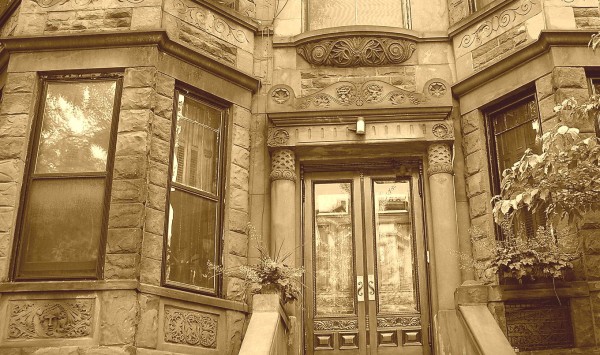
******************************************************************************************************************************** Brownstone Detectives investigates the history of our clients’ homes. The story you are about to read was composed from research conducted in the course of one of those investigations. Do you know the history of YOUR house? ******************************************************************************************************************************** When a badly decomposed body was discovered in the basement of a tony Park Slope brownstone, two of Brooklyn’s best detectives were put on the case. THE SETTING “Thomas Dempsey a retired merchant, who lives with his young wife and mother in law in a handsome brown stone house at 248 Garfield place, near Eighth avenue, rushed into the Bergen street police station in a fluster late yesterday afternoon,” reported the Brooklyn Daily Eagle, declaring “that he had just found his servant Edith lying dead in the basement of the laundry.” Dempsey was in an anxious state, the paper noted, observing that he wanted “the body removed without delay as it was badly decomposed and also to have the fullest investigation possible made by the police.” THE WEEK BEFORE THE DISCOVERY Mr. Dempsey, with his wife and mother in law, departed for a vacation trip to Asbury Park on 9 August 1893. They left the house and a pet pug dog in charge of Edith Moe, “a middle aged genteel looking woman” of 35, who was “of a very nervous disposition and who seemed dreadfully afraid to let her friends know that she was living out.” Mr. Dempsey’s mother-in-law, it was learned, had hired Edith, so Mr. Dempsey did not know […]
THE LOST ART OF MOVING HOUSES (1900)
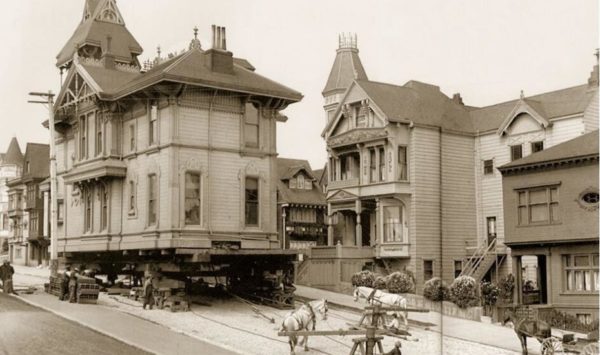
******************************************************************************************************************************** Brownstone Detectives investigates the history of our clients’ homes. The story you are about to read was composed from research conducted in the course of one of those investigations. Do you know the history of YOUR house? ******************************************************************************************************************************** An article in the 28 March 1900 edition of the Brooklyn Daily Eagle caught our eye the other day. It detailed an old practice of moving houses, and it took place in a time when the economics were such that their transport to another lot made more fiscal sense than tearing them down wholesale. In this story, however, the time it took to move this particular house took a toll on the neighboring residents. And, at one point, they gathered to tear the house down, themselves… THE HOUSE IN THE STREET The story took place in the early part of 1900 in Flatbush at the corner of Flatbush Avenue and Linden Boulevard. The subject was a frame structure that was being moved from that corner, although not quickly enough for local residents who protested the house’s temporary location on Linden Boulevard. And by “on Linden Boulevard,” we mean on the actual roadway itself. “A frame building stands in the middle of Linden boulevard, at its junction with Flatbush avenue. The building bears the sign of Vanderveer & Williamson, real estate agents,” the reporter started his story. Vanderveer & Williamson, we discovered – through combing the newspaper’s archives – were Adrian Vanderveer and Adrian N. Williamson, who had, by this point, had […]
SHOT BY AN ORGAN GRINDER (1895)
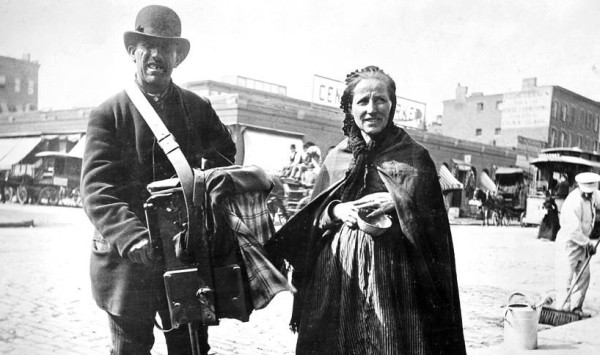
******************************************************************************************************************************** Brownstone Detectives investigates the history of our clients’ homes. The story you are about to read was composed from research conducted in the course of one of those investigations. Do you know the history of YOUR house? ******************************************************************************************************************************** Two things can be said of most 19th century Brooklyn organ grinders – they were rarely accompanied by monkey assistants, and they were chiefly non-violent types. As romantic a figure as they are to us today, though, they were not altogether loved by the citizens of their time. Many found the “music” of their hand organs to be grating and and an unforgivable breach of the peace. By and large, most were harmless poor Italian men simply plying their trade in order to bring in a meager living – usually to feed a large family. One morning, though, in December of 1895, the tune of one grinder did not present as sonorous music to the ears of a rising Brooklynite, and in the process this resident found that, attempting to prevent the strains of a lilting ballad, he had “stirred the wrong Italian.” OUTSIDE A BAR ON AN EARLY MONDAY MORNING Michielo Geraso, accompanied by another Italian with a hand organ, appeared in front of the saloon of Bernard Lyons on Tillary street at about 9:30 a.m. Geraso’s companion turned the organ crank while Geraso “made ready to collect money.” The organ had scarcely tuned up when the Italians were ordered to move on. Lyons’ saloon was closed on account of […]
HE KNOWS HIS JEWELS ARE SAFE (1892)
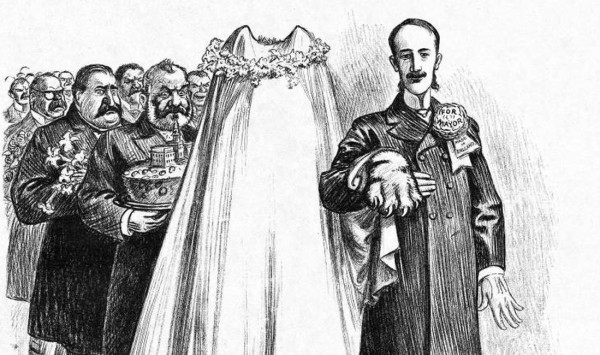
******************************************************************************************************************************** Brownstone Detectives investigates the history of our clients’ homes. The story you are about to read was composed from research conducted in the course of one of those investigations. Do you know the history of YOUR house? ******************************************************************************************************************************** When the daughter of a Tammany Hall “boss” is married, how does the new son-in-law protect their wedding gifts? By installing a jewel vault in the cellar of his brownstone, of course! THE JEWEL VAULT ON WASHINGTON PARK When Dr. Alexander F. Carroll married the eldest daughter of Brooklyn Democratic Boss, Hugh McLaughlin, in 1890, the New York Times reported that the “wedding gifts were of the most costly and elaborate nature.” “So valuable were they,” New York’s paper of record continued, “that when Mr. and Mrs. Carroll moved to their Washington Park home they had a great burglar-proof vault built under the sidewalk.” Apparently, all of the Boss’s numerous friends and supporters “remembered the happy couple substantially” which presented them with a good problem to have – how to safeguard their extreme amount of new-found jewel wealth. A list of the bridal presents “covered three columns in the Eagle,” noted The New York Sun, the presenters of which included then-President Cleveland. The value of the gifts were variously estimated at “from $100,000 to $200,000.” Mrs. Carroll was “very much worried because she has had to keep the mass of gold and silver received at the time of her marriage in the house and has had private detectives watching the premises.” […]
THE LION COMIQUE OF 276 CARLTON AVE (1930)
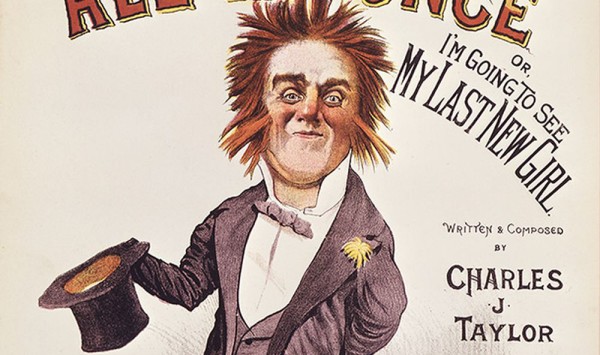
******************************************************************************************************************************** Brownstone Detectives investigates the history of our clients’ homes. The story you are about to read was composed from research conducted in the course of one of those investigations. Do you know the history of YOUR house? ******************************************************************************************************************************** Fred Roberts was known in the “seventies” as one of the great comic singers of the variety show. He sang the topical and comic songs that were then popular, often making them well-known himself. Brought over from London by the legendary Harrigan & Hart, Roberts had been known in the English music halls as a “Lion Comique” – a music hall character that was the heart throb of the Victorian era, holding the same cult status as today’s boy bands. According to The Victorian Music Hall: Culture, Class and Conflict, the songs the lions comiques sang were “hymns of praise to the virtues of idleness, womanising and drinking.” In Roberts’ songs, he “deliberately distorted social reality for amusement and escapism.” One critic in the late 19th century remarked that the Lions Comiques were “men who set women just a little higher than their bottle.” Roberts was to be Harrigan & Hart’s answer to the popularity of the famous impresario, Tony Pastor. He soon had a string of hits that were “hummed and whistled around the town” from the 1870s through to the early 20th century when he retired. Roberts’ first song, “Oh, Fred, Tell Them to Stop,” was such a huge hit that he decided to stay in the U.S. and […]
THE BOMBING OF BROOKLYN HEIGHTS (1892)
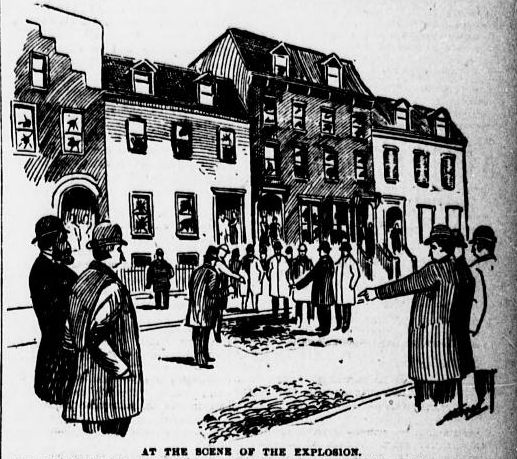
******************************************************************************************************************************** Brownstone Detectives investigates the history of our clients’ homes. The story you are about to read was composed from research conducted in the course of one of those investigations. Do you know the history of YOUR house? ******************************************************************************************************************************** It was just past 1 a.m. on a cool Saturday morning in the tony Columbia Heights section of Brooklyn. The police reserves of the Second Precinct, under the able leadership of Sergeant Joseph Carrougher, would soon be arriving on the scene. Carrougher’s desk sergeant had just awoken him out of a deep sleep at the Fulton Street police station. The sergeant had looked at him gravely in the dark of the room. “Somebody exploded a dynamite bomb on Willow Street.” “GROTESQUELY DRESSED, THE RESULT OF A HURRIED TOILET” When Carrougher arrived on the scene, he found Officer Seymour, “a portion of whose post was the scene of the explosion,” along with “a crowd of citizens” busily disturbing the crime scene. It was not too troublesome, however, having this crowd of citizens, “grotesquely dressed, the result of a hurried toilet,” tromping about the evidence. So long as they did not take anything that would assist in apprehending the guilty party. But many at the scene that night had begun amusing themselves “by digging out the fine white powder of the cobblestone with their penknives,” taking away samples. Sgt. Carrougher had seen it all in his 25 loyal years of dedication to the force. And while there were a number of clues that […]
SPRING BRINGS THE BEAN SHOOTERS (1863)
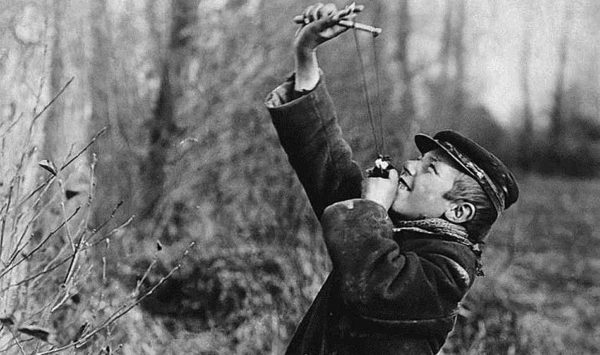
******************************************************************************************************************************** Brownstone Detectives investigates the history of our clients’ homes. The story you are about to read was composed from research conducted in the course of one of those investigations. Do you know the history of YOUR house? ******************************************************************************************************************************** There were a LOT of bad little boys in Brooklyn in the 19th century. Sifting through old issues of the Brooklyn Daily Eagle, the Standard Union, and other Brooklyn papers, I come across evidence of this on a daily basis. Of all the crimes that I see having been committed, one of the most common – and interesting – is the work of the “bean shooters.” When I was a kid I had a bean-shooter myself – and I did the same thing. There were a lot of broken window panes in my neighborhood – some I was found guilty of breaking – and most others of which I got away scot free of any blame whatsoever. (There was always the suspicion, though, that I was the culprit.) But I digress. Let’s rewind, though – further back to the mid- to late-1800s, and take a look at the work of my fierce little boy predecessors. BEAN-SHOOTING IN 19TH CENTURY BROOKLYN While sling shots (or often called “slung shots”) were a constant presence in the hands of gang members and criminals (they were outlawed by the New York State Legislature in 1849), it seems that the use of such a device by boys, with any degree of consistency, did not come until […]